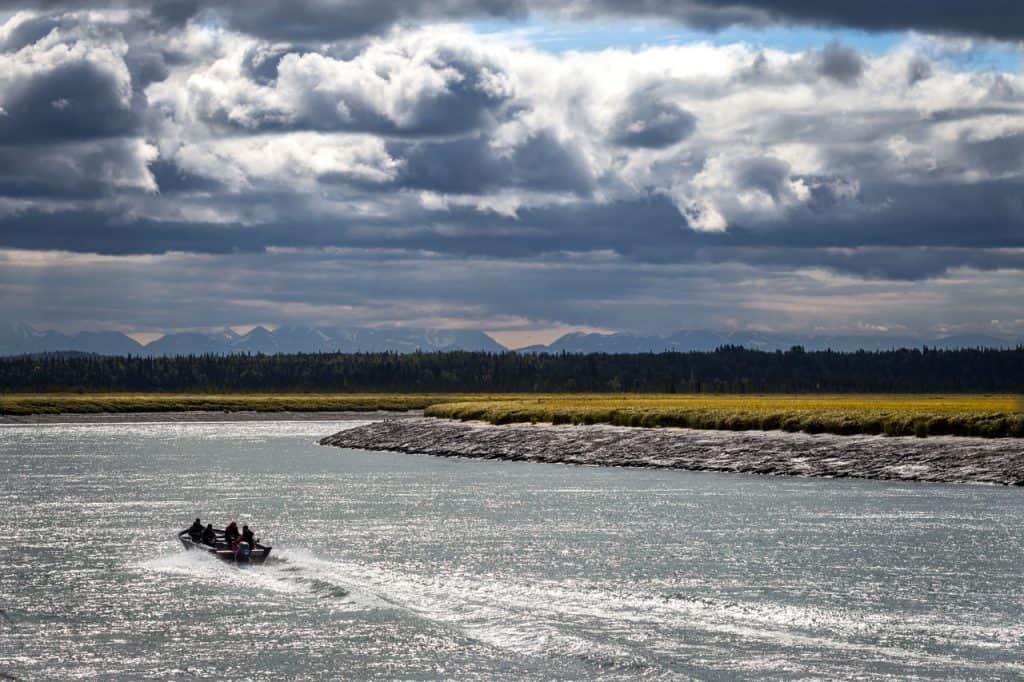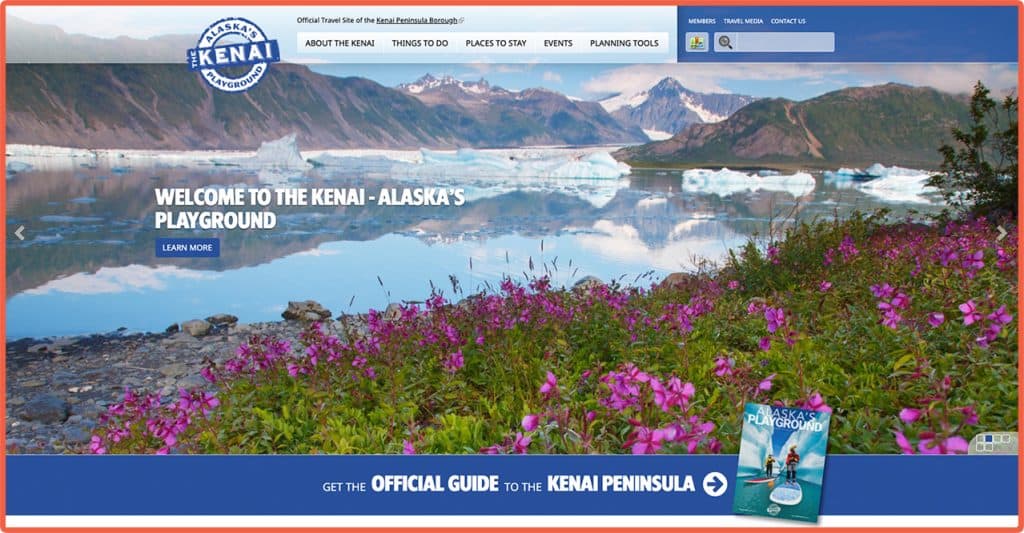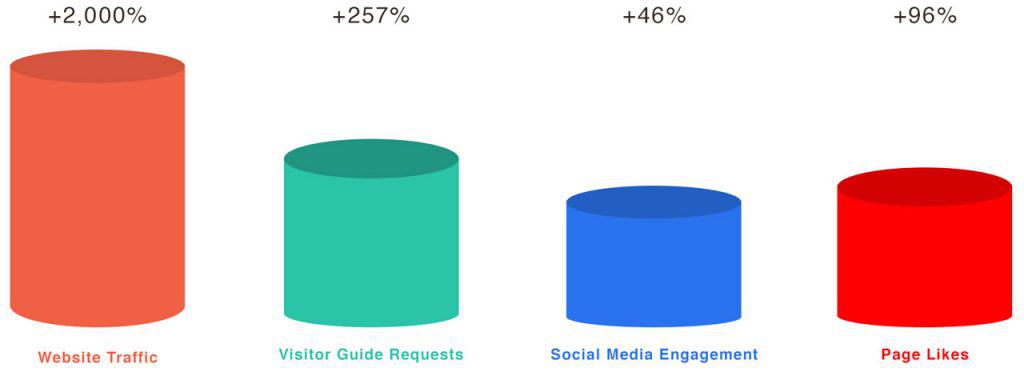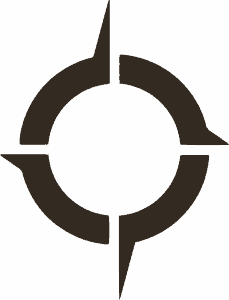SALVAGING TOURISM DURING A TRAGEDY, TWICE

Scope of Work

Strategy
Social Media
Website Support
Digital Marketing
Content Marketing
Internet Security
SEO

Conversion Funnel Optimization
Tourism Marketing In the Last Frontier
The Kenai Peninsula Tourism Marketing Council (KPTMC) is a member-driven Destination Marketing Organization (DMO) that serves to increase tourism and travel to the Kenai Peninsula in Alaska. The organization has a mission to serve a large territory that includes well-known destinations in Alaska, like Kenai, Seward, Homer and Soldotna, and many other smaller communities.
A Sluggish Season
The KPTMC used a combination of traditional marketing methods in conjunction with a website that was built on an outdated and insecure version of Drupal. Since sales tax associated with tourism accounts for 25% of all sales tax revenue on the Peninsula, the KPTMC faced a growing problem. Prior to 2019, tourism to the Peninsula experienced a -3.1% drop when projections expected a 4% increase year over year. With only seven months until the peak summer season, the KPTMC asked Divining Point to assist with boosting vacation planning to the area.
using data to find likely visitors
Divining Point started with a thorough review of the marketing methods employed by the KPTMC. Like many other DMO’s, there was heavy reliance on printed Visitor Guides to advertise local attractions, businesses and information about the area. The organization mailed physical copies of the Visitor Guide to people who made online requests. However, the majority of the guides were distributed to local establishments and visitor centers, where they purportedly would be collected by tourists already in the area. Digital marketing methods revolved almost exclusively around a website and organic social media.
Divining Point recommended a robust digital advertising strategy to target two territories: Anchorage and the mainland United States – aka “The Lower 48”. The mission was to introduce the Kenai Peninsula as a prime destination for fishing, hiking, sightseeing, RV travel, and lodging.
After a deeper analysis, we discovered that travelers historically came from the greater Alaskan area, Washington, Oregon, California, Texas and Florida. We focused our advertising efforts on these five states to position the Kenai Peninsula as “Alaska’s Playground”.

In order to track conversions on the website, a series of updates were made to the KPTMC website. A conversion tracking process was implemented, and we tracked requests for the Visitor Guide, along with clicks to member sites.
Within eight weeks of launching our campaigns, the KPTMC website saw a nearly 2000% increase in traffic and a 257% increase in Visitor Guide requests. Engagement on social media climbed by 46%, whereas Likes to the page increased by 96%. Each month during the engagement we saw triple digit increases in sessions, new users, Visitor Guide requests, and clicks to member sites.

Hacking The Season
After three months into our engagement, we noticed something suspicious during monthly reporting.
Keywords for athletic shoes and adult related content were being attributed to the website, with remarkable growth in rankings over more relevant keywords. After close inspection of the source code, we determined that two years prior to our engagement, a hacker had inserted a keylogger into the KPTMC website to record passwords to enter the site. They also added themselves as an admin to the Search Console without anyone noticing.
As our advertising campaigns drove traffic to the site, the hacker was alerted and returned to fill the site with malicious code, hidden keywords, and dozens of pages with pornography that was only visible when using crawler view.
Soon after, Google sent a warning that the website would be blacklisted if the issues were not repaired.
We worked quickly to block the hacker from accessing the website while simultaneously removing the mechanism to hide the pages and keywords. The site was scrubbed, and the site’s standing with Google was salvaged. Following this cleanse, keyword rankings made remarkable improvements across the board and our pay-per-click campaigns resumed their stellar performance.
Hacking The Season
In June of 2019, a lightning strike ignited the brittle grass around Swan Lake close to Cooper Landing on the Kenai Peninsula. The fire spread throughout June and July until it engulfed 167,164 acres of pristine woodlands. The fire also impacted vacation planning for many travelers who had not already departed for Alaska. As the fire grew, travel planning from outside of Alaska dropped.
Many members of the KPTMC experienced significant revenue drops and damages. As our campaigns were winding down by July, KPTMC faced significant challenges with funding. From the start to the end of our campaigns, our final reporting showed X% traffic to the website, X number of Visitor Guide requests, and X% increases in keyword ranking for organic search. Our performance helped the KPTMC win additional public funding, plus increased member contributions, to invest in digital marketing again for 2020.
